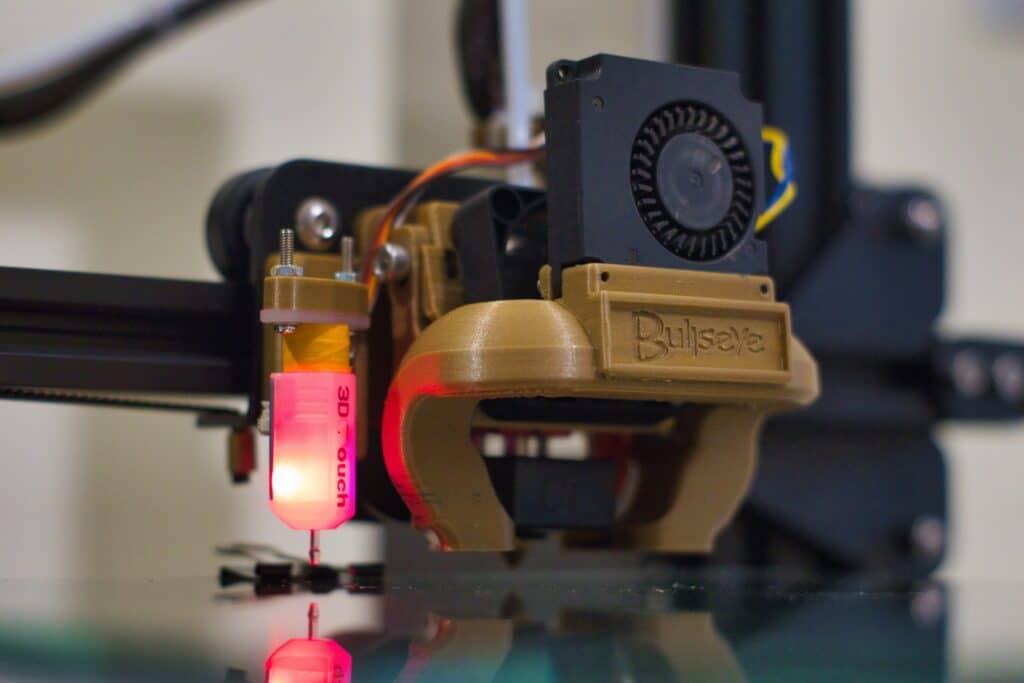3D Printing with Tinkercad
Design and bring your 3D models to life with animations, preparing them for flawless 3D printing.

Our tutors graduated from top universities







Overview
Customised curriculum
We'll find a tutor who can make sure you're prepared for the A-Level Chemistry exam with customisable lessons catered to fit your needs.
Flexible
Take lessons only when you need them—as little or as many as necessary until you feel confident.
Private lesson
No need to accommodate other students. Learning is customised your perfect pace and difficulty so you are always improving.
About Tinkercad
Tinkercad, developed by Autodesk, serves as a welcoming gateway into the realm of 3D modeling. Its user-friendly web interface is particularly accessible to newcomers, including younger users, even if they have no prior experience with computer-aided design (CAD).
Noteworthy Features:
1. Effortless Geometry Creation: Tinkercad employs Constructive Solid Geometry (CSG) to simplify the generation of intricate 3D shapes by merging simpler ones, streamlining both design and visualization.
2. Device Compatibility: Being a cloud-based tool, Tinkercad ensures that your projects remain accessible from any internet-connected device, adding convenience and flexibility.
3. Abundant Material and Color Options: The software offers a wide array of predefined materials and colors, aiding in visualizing your final print.
4. Guided Learning: Tinkercad provides a selection of interactive tutorials integrated into the platform, a valuable resource for educators and newcomers to 3D modeling.
5. Expanded Functionality: Beyond 3D modeling, Tinkercad extends its capabilities with features like Codeblocks for simplified programming and a Circuits component for virtual electronics experiments, enhancing its educational value.
6. Versatile Export Options: It supports various export formats compatible with 3D printers, CNC machines, and even Minecraft. Seamless integration with other Autodesk products allows for smooth transitions to more advanced software.
7. Thriving Online Community: Tinkercad boasts an active user community where collaboration, project sharing, and inspiration thrive. The platform’s public design library serves as an excellent starting point for your own creative ventures.
Common Applications:
1. Educational Environments: Tinkercad is frequently utilized in educational settings to impart fundamental 3D design and engineering principles.
2. Rapid Prototyping: It is a favored tool for swiftly creating 3D models, particularly useful for initial concept testing before progressing to more advanced software.
3. Personal Endeavors: Whether crafting custom home items or unique gifts, Tinkercad’s versatility makes it suitable for a variety of personal projects.
Tinkercad’s blend of powerful features and user-friendliness positions it as an excellent choice for students, educators, hobbyists, or professionals seeking a simplified path to bring their creative ideas to life as 3D models.
Description
This course is tailored for beginners in 3D design, providing an ideal starting point. Using TinkerCAD, students can unleash their creativity to craft unique characters or objects. It’s also great for young learners with a 3D printer who want to print custom creations instead of using templates.
In addition to hands-on design practice, this course covers the fundamentals of 3D printing. Students will gain a comprehensive understanding of the entire process, from digital design to physical prototypes. By combining creative exploration and technical guidance, this course establishes a strong foundation for anyone interested in the captivating world of 3D design and printing.
What you will learn
- Simplify intricate items by deconstructing them into basic components.
- Visualize and craft objects in a three-dimensional environment.
- Enhance 2D artistic abilities and create distinct characters.
- Prepare 3D models for the printing process and make adjustments to existing 3D designs.
Requirements
- Ages 7 – 13
- Interested in 3D design
Student FAQs About 3D Printing with Tinkercad
In the realm of 3D printing, layering involves constructing an object layer by layer, starting from the base. Each subsequent layer adheres to the one beneath it, resulting in a solid and coherent object. Grasping the concept of layering is crucial for optimizing both the speed and quality of your 3D prints.
FDM (Fused Deposition Modeling) and SLA (Stereolithography) are two prevalent 3D printing methods. FDM entails melting plastic filaments and depositing them layer by layer to shape an object. In contrast, SLA employs a laser to solidify liquid resin also in a layer-wise fashion. These technologies each have their unique strengths and weaknesses, impacting factors such as print quality, material versatility, and printing speed.
Infill refers to the internal lattice or structure within your 3D print. You can adjust infill density to make your print either more solid or more hollow, which affects both printing time and material consumption. Opting for denser infill creates a sturdier object but consumes more material and extends the time required for printing.
Support material serves to provide support for overhanging sections and intricate geometries during 3D printing. Typically, this support material is removed after the printing process. The necessity for support material depends on the specific design characteristics of the object being printed.
Bed leveling is the process of ensuring that the print bed is perfectly level and aligned with the printer’s nozzle. This is critical for achieving high-quality prints. An improperly leveled bed can lead to issues like poor layer adhesion, uneven layering, or even complete print failure. While many modern 3D printers come with automated bed leveling systems, manual calibration remains common in older or budget-friendly models.
Looking for other coding tuition?
How it works
1
Request a tutor
Let us know your goals and age range. We'll figure out a plan to help get you there.
2
Match with a tutor
You'll get a tutor based on your needs and goals, or you can request a specific tutor.
3
Start a free trial
Experience a free trial lesson with your new tutor and see if your learning style matches.
4
Keep it up!
If everything went well, sign up to keep going! You can choose the pacing of the lessons
1Request a tutor
Let us know your goals and age range. We'll figure out a plan to help get you there.
2Match with a tutor
You'll get a tutor based on your needs and goals, or you can request a specific tutor.
3Start a free trial
Experience a free trial lesson with your new tutor and see if your learning style matches.
4Keep it up!
If everything went well, sign up to keep going! You can choose the pacing of the lessons
Need more info?
Let's talk.
Leave your phone number, and we’ll call you back to discuss how we can help you.


